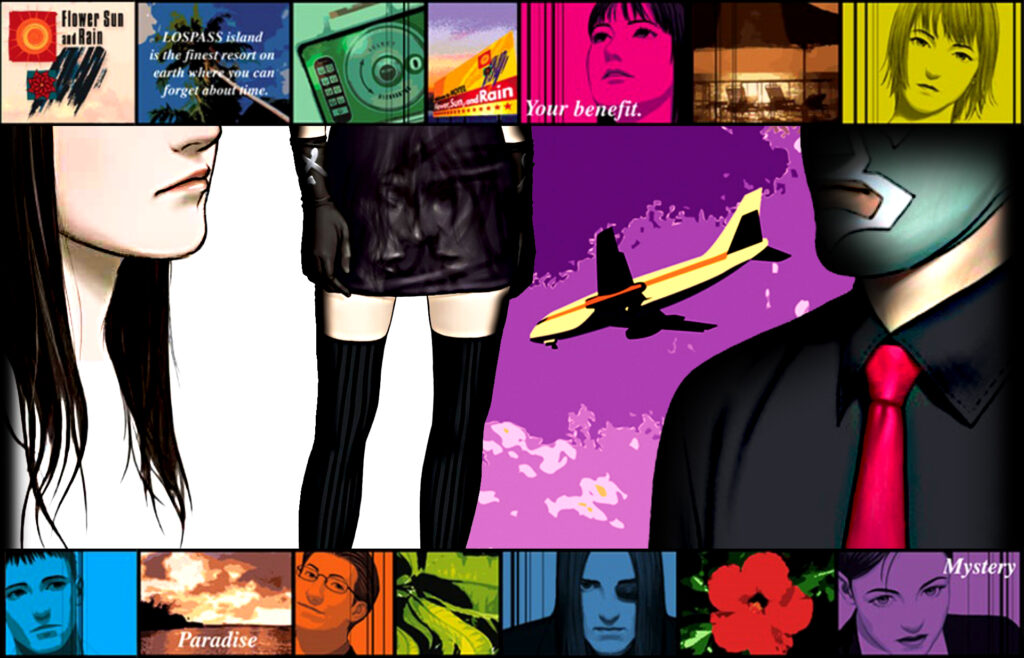
Flower, Sun, and Rain was to be the second of two titles that ASCII was supposed to distribute for Grasshopper Manufacture.
Following his “Kill the Past” development philosophy, Suda decided that F.S.R. was going to be a completely different game from their previous outing, The Silver Case.
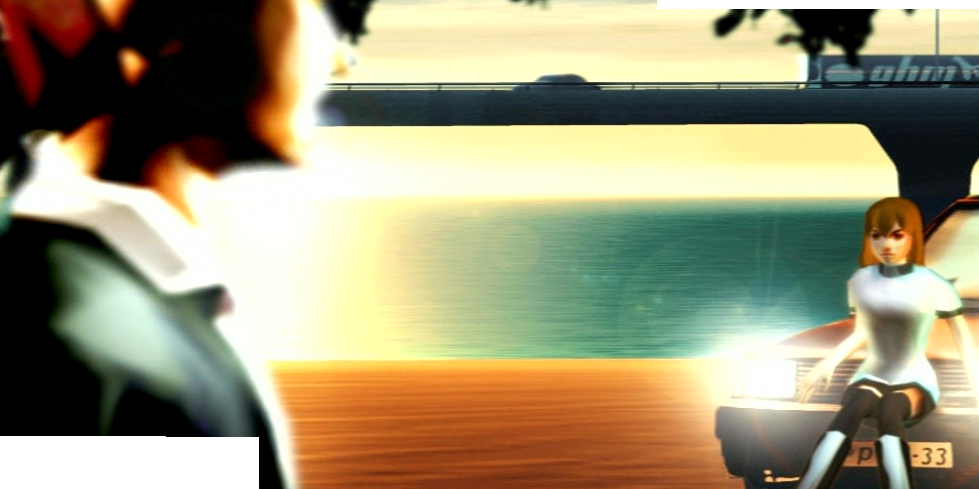
Conceptualization for the title began in April of 1999, when The Silver had just gone gold. It was decided that the game would be developed for the then-upcoming PlayStation 2 console; with its specs still being unknown, the team at GhM put their trust into their publisher for suggestions, as opposed to the fully independent development of their previous outing. ASCII rejected the very first proposal, which was to be a collection of three separate games in one package, as it would have been difficult to construct an engine that could support all three for the recently established team, and more than that because it might be perceived by consumers as a collection of mini-games, making it harder to market.
The first of the three games, an evolution of the system already present in the Syndrome games but without the limitations of a flat, two-dimensional plane, ultimately became the prototype for the finished game; the other two games would have involved building demolition puzzles and solving mysteries in an airport.
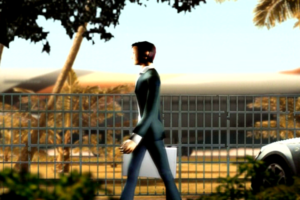
Even though this proposal was rejected, it served as a basis in deciding the game’s setting; as opposed to the drab cityscape of The Silver, F.S.R. would take place in a tropical “Paradise”, following up on ruminations on the subject already present in Moonlight Syndrome. To the original idea of having a mystery story set in an airport, a counter-proposal emerged about setting it in a hotel instead. In trying to fill the distance between the airport and the hotel, the tropical paradise of Lospass Island was born.
Suda’s main inspiration in creating the setting of Paradise, as he stated in the Suda51 Official Complete Book, was the movie The Miracle of Joe Petrel, in which a Japanese-Filipino gangster based in Okinawa has to flee to the Philippines after killing a local Yakuza. Having seen it as a child, as he was living in the city, the imagery of the less developed scenery of Okinawa and the Philippines was like a mirage that he could only perceive in movies, making it dream-like and distant.
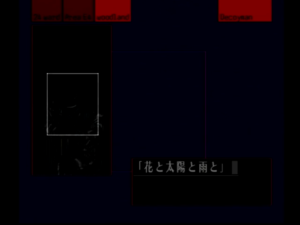
He was further reminded of this kind of scenery by reading an issue of the magazine Brutus, namely issue 454 published in May of 2000, detailing the idea of “One Island, One Resort“, which in itself refers to a specific phenomenon in the Maldives archipelago where each and every island is occupied by a single hotel. The island of Lospass and its hotel, the “Flower, Sun and Rain,” would obviously be heavily influenced by such an idea, and Suda later paid homage to it with the short story included in the booklet of the soundtrack CD Water – For relaxing time, titled “One Island, One Resort and One More Episode.”
The title itself, “Flower, Sun, and Rain”, comes from a PYG song. Suda’s original idea for the title was just “Flower and Sun”, but his plans changed when he came across an interview where Kishibe Ittoku, PYG’s bassist at the time, discussed the song. The melody sparked a sense of nostalgia in Suda, which can be felt through the game’s scenario, although they were unfortunately unable to use the song itself. This exposure must have happened even before the conceptual phase, as the moniker “Flower, Sun, and Rain” already appeared in The Silver Case.
In contrast to the limited movement of The Silver, F.S.R. was going to feature a fully three-dimensional world which the player character could explore at their leisure, what was initially proposed as an evolution of the Syndrome system. Some leftover files in the game’s disc and a pre-release mock-up seem to indicate that the game was originally planned to function within the Film Window engine; however, those plans were ultimately scrapped in favor of building a new engine that would better accomodate the game’s presentation.
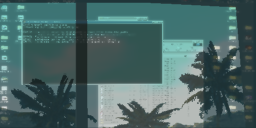
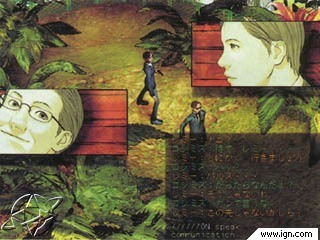
During production the team began to expand, most notably with the inclusion of Akira Ueda as a background artist, complementing the work of Akihiko Ishizaka.
Ueda’s pedigree as background artist included Secret of Mana and Super Mario RPG while working at Squaresoft (now Square-Enix), and Moon and UFO during his tenure in Love-de-lic, an independent company comprised of ex-Squaresoft employees. His experience in working on fantasy games likely informed the creation of Lospass as a paradise separate from the real world.
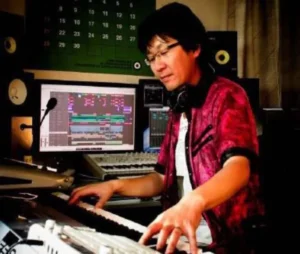
Masafumi Takada was joined by fellow musician Shingo Yasumoto (composer for Mizzurna Falls who also worked on Twilight Syndrome), forming the band Torn specifically to work on F.S.R.’s soundtrack. Their original compositions would be accosted by a wide variety of arrangements of pre-existing, royalty-free tracks: downtempo, chillout, house, worldbeat, as well as acid, latin, and ambient styles of jazz; this wide variety of melodies was selected in order to express the theme of a specific area or event, with the use of pre-existing melodies mimicking lounge music to further enhance the resort-like atmosphere. Torn would also provide the soundtrack for a 2001 Bandai flip-phone adventure game, e-POLICE, in what is likely Grasshopper’s first external collaboration.
The final touch for bringing the paradise of Lospass to life saw the sound team fly to Phuket (Thailand) to record its natural sounds, which would accompany the player character through his his travels on the island.
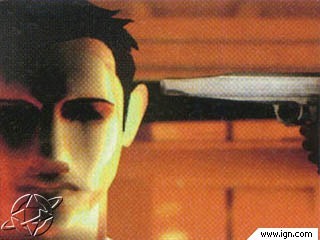
Once the setting and genre had been decided, the team encountered more strife with ASCII in regards to the system used for puzzle solving. The initial proposal saw the player character hold a gun with only sixteen bullets through the course of the entire game; figuring out who or what to shoot would be the key to solving each scenario, with the final puzzle being solved by shooting oneself. According to ASCII, that would lead the game to receive a sticker warning consumers of the violent content, which would hinder sales and also create strife with Sony Computer Entertainment.
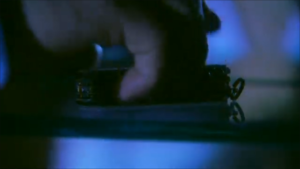
Once the gun was scrapped, it was replaced by a Victorinox Swiss army knife, with its multiple tools being used to solve the various puzzles; the knife would be accompanied by a plush doll of the company’s mascot, Hopperman, which contained a bomb and could be given to certain characters to advance the story. It was at this point that the crew flew to Saipan to shoot the introductory video, which would be done in live action in accordance to Suda’s mixed media style, which is why Sumio is seen grabbing a Swiss army knife in it, while Toriko carries a plush toy.
This system ended up being scrapped due to its similarities to the Enix game Suzuki Bakuhatsu, where a tool knife is also used to solve the game’s puzzles. The Hopperman doll was also thrown away at this stage.
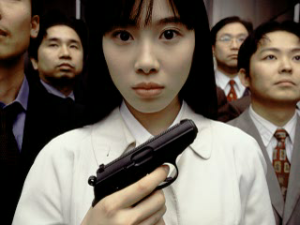
A toolbox was also proposed before ultimately settling on a code breaking machine, located in the player character’s suitcase, that would jack-in to various devices through the course of the game. The device was named “Katharine”, after the Catherine Wheel firework, due to its rotating input system. The game’s puzzles would therefore be solved by inputting numbers into Katharine’s dial, rather than by shooting different characters.
The idea to center the game’s puzzles around mathematics came to Suda when watching the movie Parasite Eve, where a numerical cipher is used by two characters to communicate a secret message. It was also chosen to make the system more intuitive: even though the army knife and toolbox ideas were scrapped, Suda still felt that the level of difficulty should arise from the puzzles themselves rather than with dealing with the interface, so the method of input was made to be similar to a phone dial, an everyday item that most players would be familiar with.

It was during this phase of development that two more ideas emerged: For one, the player character would be identified as a “searcher”, intuitively communicating to the player that the objective of the game would be to search for items and solve puzzles; secondly, the numbers that the searcher would have to input in Katharine would be found in a book, another mundane item that users could easily relate to in the real world.
By making said book, which would ultimately become the Lospass tourist guide, into a physical item that players could take outside with them, and by hiding the secret of Lospass within said book, it could be said that the setting of the game would be the real world itself.
With the setting and system in place, work began on character designs and scenario writing. Takashi Miyamoto returned once more as the character artist and would alter his signature style to match the lighter tone of Lospass Island, compared to his work on The Silver. His main inspiration in that regard was american action movies like “Mission Impossible”, in which characters could shoot guns and engage in violent actions without having to show blood or gore.
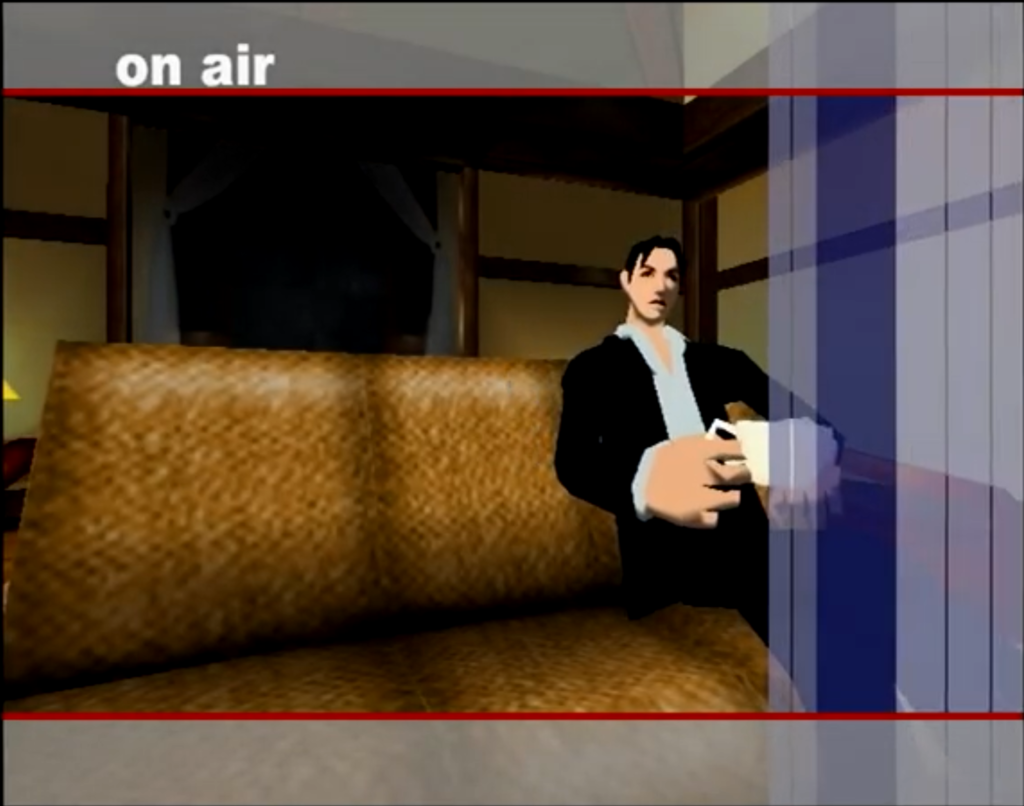
It was decided pretty early on that his drawings would not be translated into photo-realistic models; the characters in F.S.R. have cartoony, exaggerated proportions, exasperating the game’s surreal tone and the separation between the artwork and the character models is even brought up in dialogue. Akihiko Ishizaka was extremely critical and selective when it came to selecting the 3D models to be used in the game, which frustrated Suda; however, due to their long-standing relationship, he would force Character Modeler Rika Kurokawa to comply with his demands.
It was also decided that Suda would not write most of the scenario himself, focusing instead on direction: Product Manager Takuhiro Goto suggested that Suda’s oppressive writing style would not be suited for the game’s more relaxed tone compared to its predecessor.
For this reason, four different writers were brought on board, with freelancer Masahi Ooka following up his work on The Silver Case’s Placebo arc alongside Sako Kato, assistant director Yoshikazu Harada, and and an ASCII employee only credited as Minemine. The initial idea was for Suda to only write the main story, leaving the individual episodes to the team of four writers, who would divide up the scenario based on the characters involved.

Ooka’s and Kato’s scenarios, while well written, at times failed to account for the game’s presentation and how the events would play out in 3D. At the same time, Harada’s scenario was bold but did not match with the reality of the game, and while Minemine’s idea of presenting the game as an episodic drama does appear in the finished product, most of his writing actually ended up being scrapped, which is likely why they were only credited with a nickname.
Because of this and other reasons, namely the connections that F.S.R. shared with their previous title and the disparity between the characters’ words and their presentation, their writing failed to coalesce into a cohesive whole and Suda ended up re-writing most of the script for coherency, though their respective quirks still managed to emerge in the finished product. (An example Suda brought up directly in the interview he gave to the GPara fansite is the various references to the AS Roma soccer team present in the game’s second request being penned directly by Ooka.)
Nobuhiko Sagara, previously in charge of The Silver’s official website, provided additional writing for the game’s manual and the in-game tourist guide to Lospass Island. Ren Yamazaki, who would later work as director on several Grasshopper titles, also joined the company during the development of F.S.R., providing illustrations for the aforementioned tourist guide.
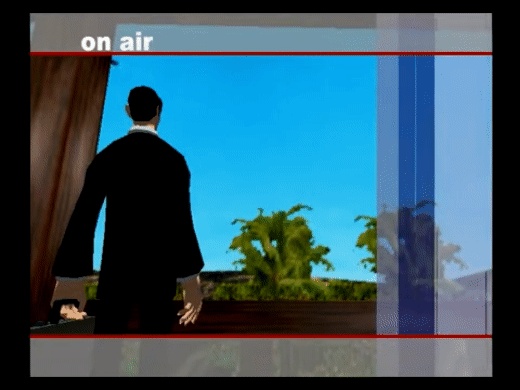
Due to budgetary concerns, it would have been impossible to record voice acting for the entire game, thus it was decided that the characters would speak in gibberish. While it was intended as a cost-saving measure, Suda specifically referred to the voices as a “random foreign language”; naturally, a resort is a place where people of many different nationalities end up meeting each other, thus making the dialogue an amalgamation of “random foreign languages” serves the purpose of breaking that barrier, a detail we can also see in the introductory video and in other parts of the game’s presentation, where different languages are presented right next to one another much like they would in an airport.
In the scenario that would ultimately emerge from this process, Sumio Mondo is a searcher who is hired by Edo McAllister, the manager of the Flower, Sun, and Rain Hotel, to find a bomb that a nefarious terrorist is using to threaten Lospass Island. However, the island itself is trapped in a time-loop, so Mondo sees the plane explode at the end of each day after failing to find the bomb. The inclusion of this daily explosion was actually encouraged by ASCII, who felt that such an element gave the game a more Hollywood-like feel and would help it stand out against the competition.
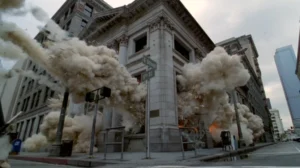
The idea to set the story in a 24-hours time-loop capped with an explosion came from an episode of X-Files titled “Monday“, in which Fox Mulder is killed by a suicide bomber during a bank heist, only to be forced to re-live the same day over and over. In that episode, however, the time-loop actually revolves around a different character, a woman named Pam, who has to try her best to help Maulder prevent the explosion. Pam likely served as an inspiration for the character of Toriko Kusabi, a mysterious girl who seemingly appears in Mondo’s dreams at the end of each day, alongside her pink pet crocodile Christina, giving closure to each of the day’s events.

ASCII would promote the game during the Tokyo Game Show held in the spring of 2000 with the release of the Music Clips DVD; However, in October of that same year, the distributor suddenly announced that they would close down their videogame division, leaving F.S.R., which was slated to be released in March of 2001, without a publisher. This nearly bankrupted GhM, having spent their budget on developing F.S.R. which was, at that point, close to completion. Suda initially withheld this information from his staff, but the situation was ultimately resolved by Victor entertainment stepping in to publish the game through their interactive software subsidiary. Victor had published a number of fishing games, and ASCII used to release console peripherals for said genre; through that connection, Victor ultimately learned about the abandoned F.S.R. and decided to distribute it.
At that point, work began on cleaning up F.S.R.’s imperfections to get it ready for release. The most important change revolved around Toriko’s scenario; it was initially intended to take place in one go as the fourteenth request, but was eventually split in several shorter levels due to programmer Kawakami‘s suggestion. By the time development had run its course, GhM had a total of fifteen employees.

Before the release of the game itself, in April of 2001, Grasshopper started their own online store, called ghmrecords, which would distribute, among other things, soundtrack CDs for the games, t-shirts and other memorabilia. The following month, Flower, Sun, and Rain was finally released on the PlayStation 2.
Much like The Silver, F.S.R. was initially only released in Japan. Besides the obvious reasons for its lack of a localization, be it the niche nature of the title itself, its status as a sequel to another Japan-exclusive title or the intrinsic difficulty in localizing in Suda’s writing, the game’s imagery was also eerily predictive of the September 2001 attacks on the Twin Towers which, along with its theme of international terrorism, likely killed any chance the game would have had on the international market.
The game was reprinted in 2002 by Victor Interactive Software. By 2003, Marvelous Entertainment had acquired a 55% stake in the company, and it was decided it would be renamed as “Marvelous Interactive Inc.” F.S.R. was then reprinted once more in 2005 under the Marvelous label.
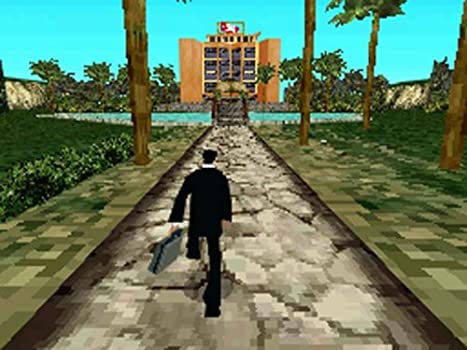
In November of 2007, Yasuhiro Wada, then president of Marvelous Interactive, proposed porting the game to Nintendo DS to Suda, who accepted right away. As he stated in this cubed3 interview, Grasshopper Manufacture was not involved with the production of this port, which was instead produced by h.a.n.d. While Marvelous producer Yoshifumi Hashimoto would make sure the end product would be as faithful as possible to the original, the game’s presentation had to be downgraded to fit the portable hardware, compromising its vision in terms of graphical fidelity and sound quality. The port also included some additional puzzles, not present in the PlayStation 2 version, which would unlock alternate costumes for the protagonist Mondo.
It did, however, also present a chance for the game to be localized for the first time: The Nintendo DS version of F.S.R., titled “Paradise Without End” in Japan and “Murder and Mystery in Paradise” in the west, was released in all major regions through the course of 2008 and 2009. While most releases were handled by Marvelous, Rising Star Games distributed the game in Europe, which also differs in terms of script compared to the later North American version.
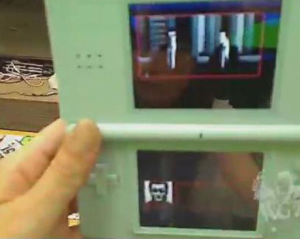
Despite its downgrades, the Nintendo DS port of F.S.R. ended up, perhaps accidentally, realizing Suda’s vision of a mystery that you can carry with you in the outside world; while this statement originally referred to the Lospass Guidebook being printed as an actual item separate from the game, players could now carry the entire world of Lospass with them wherever they wanted.
The DS port was initially planned to be followed up by similar ports for The Silver Case and The 25th Ward, though those plans, much like the twin towers, went up in smoke.
In 2018, during the fifth HOPPER’s live event, Suda announced his plans to remake Flower, Sun, and Rain once more. During a 2021 Reddit AMA he confirmed that a partner had already been chosen to develop the remake, likely to be Sukeban Games, the team responsible for VA-11 Hall-A: Cyberpunk Bartender Action.
Sukeban’s lead developer had ambitious plans for F.S.R.’s remake, meaning to implement on-rails movement in the style of killer7, a graphical overhaul and new story elements; however, for reasons unknown, it seems that the project did not come to fruition, as comments from March 2024 indicate that development of the remake is not moving forward at this time.









